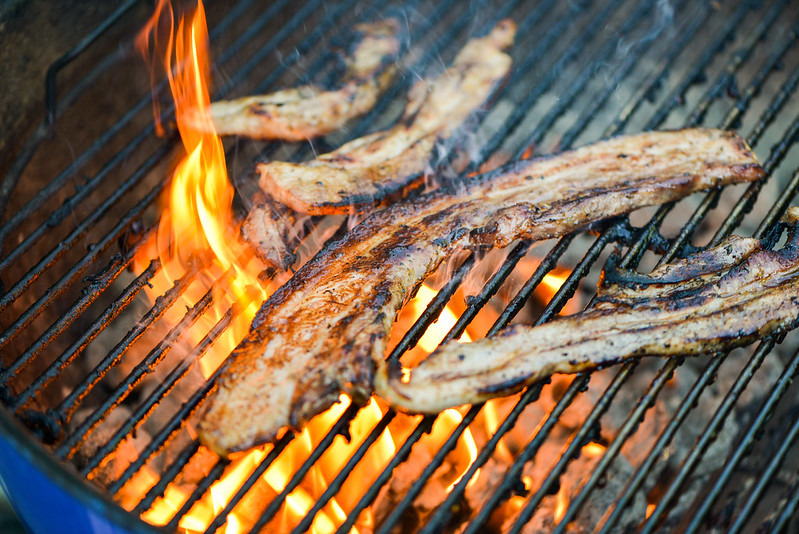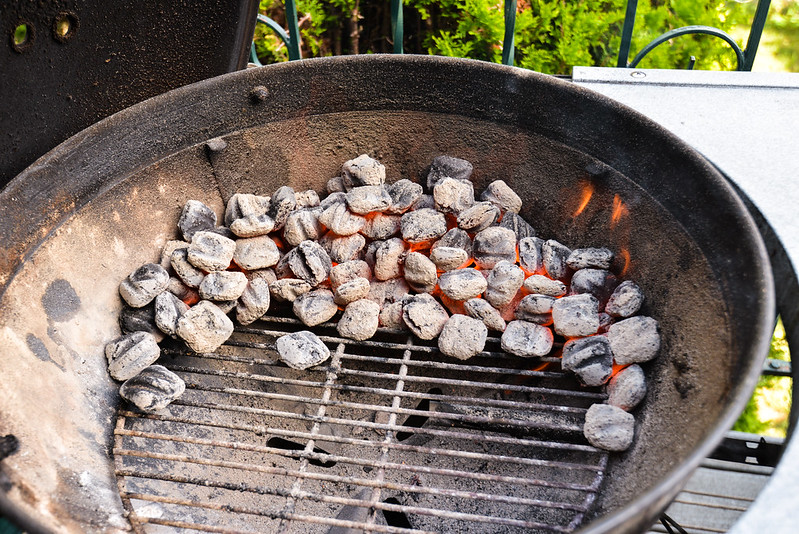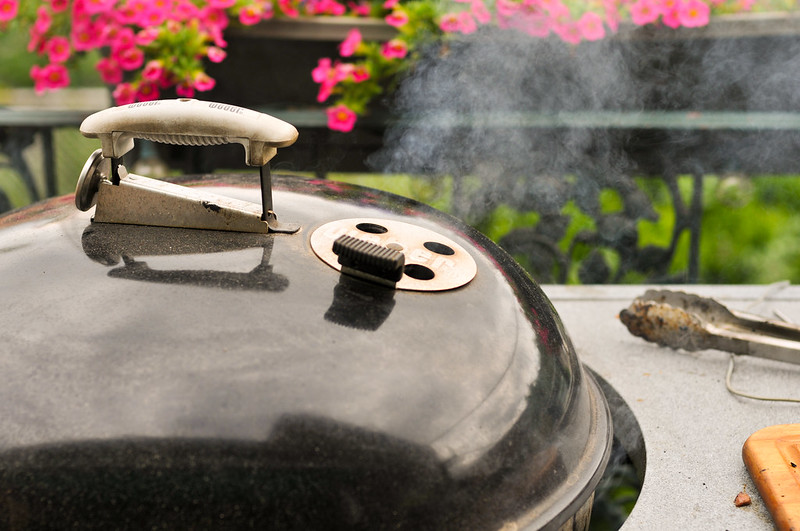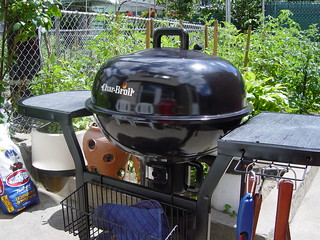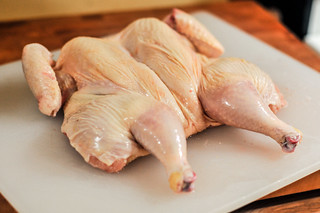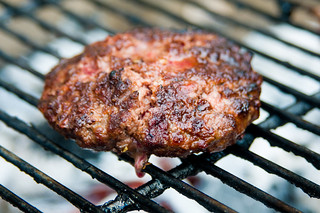Meat Tips: How to Control Flare-ups
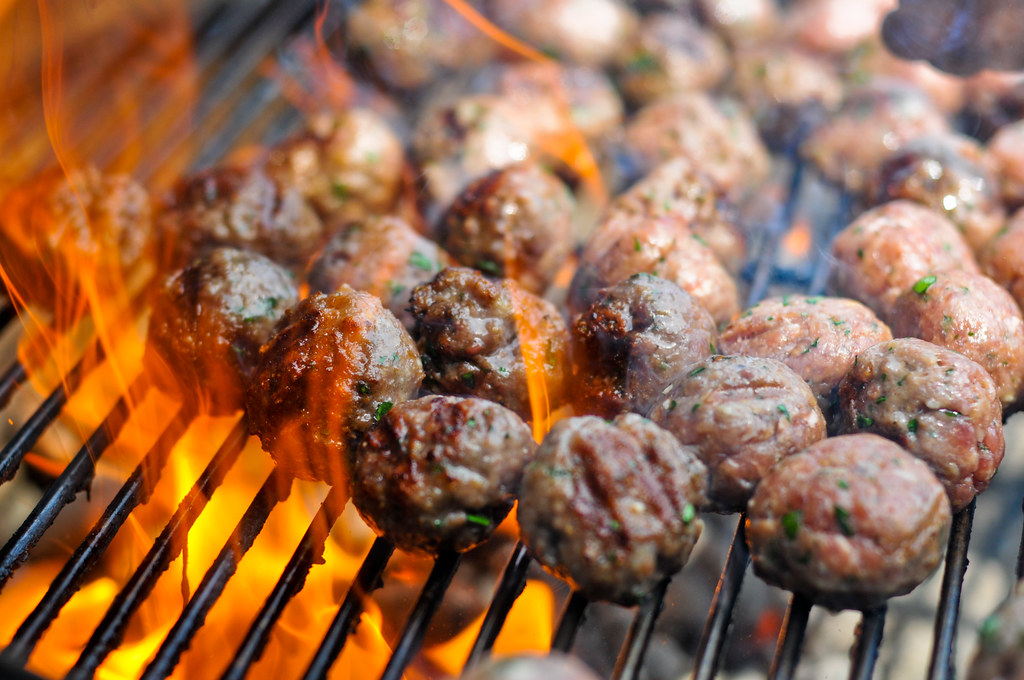
For the final installment of this summer's "basic grilling knowledge I should have imparted many years ago," it's time to handle the flare-up. You know the score—you're rolling along, bringing some steaks to a perfect medium-rare with a beautiful crusty sear, then, without a moment's notice, those grilled beauties are engulfed in fire, bringing on the possibility of burning them beyond recognition. Will you let all your hard work up go up in flames? With a little understanding of the problem at hand, the answer is most certainty a "no."
What are Flare Ups?
A flare-up can be a nasty thing, coming on quickly and posing a direct threat to whatever is on the grill. These bursts of intense flames are caused by oil or fat dripping off of food and hitting the coals, essentially causing a grease fire. They tend to occur soon after food is placed on the grill or once it's been flipped. Knowing what to do when you encounter one of these first starts with gauging the severity of the flare-up.
A small flare-up, where the flames are minimal and don't even reach the food, probably needs no course of action. It may just add a little extra heat, so closer attention to cooking time is required because it may be shorter than expected. In the more severe scenarios, when the flames are reaching up to, or surrounding, the food, there's two good ways to deal with the situation that can be used exclusively or together.
Two-Zone Method
Assuming you have a two-zone fire, you can move the flame-producing food from directly above the fire to the zone with no coals. Once the flare-up subsides, move the food back over the coals and carry on, keeping a close eye to ensure it doesn't happen again. It's precisely because of flare-ups that I like to always leave a little indirect zone on each fire I build.
Cover-and-Wait Method
If you don't have a two-zone fire, or if those flames are just too dangerous to safely dive in to, then the cover-and-wait method is where it's at. Fire needs oxygen to survive, so cutting off the flare-up's supply will effectively extinguish it. As soon as you see a flare-up, quickly cover the grill and keep an eye on the flames by peeking through the air vents or slowly lifting the lid. Once you see the flare-up is gone, it's safe to uncover and resume normal duties.
When I get a big flare-up, I tend use both these methods; first moving the food off the coals and covering the grill to extinguish it quickly, ensuring that my food doesn't get burned and I waste little valuable cooking time. That said, there are times I do nothing, even with a large, nasty flare-up. There are some foods that can benefit from a nice crusty sear the extra flames create—a steak, for example.
The trick is trying to judge how big and long the flare-up will last, because there's a very fine line between charred and burned. To do this, you need to know the fat content of what's cooking and make a judgment call on whether that fat will continue feeding the flare-up or if it will go out almost as quickly as it came. If ever in doubt, take the flare-up to town and save the food.
Alternatively, there are some foods that should never be allowed to stay in a flare-up, requiring swift and immediate action. This includes anything with a sugar-based sauce or marinade or foods rubbed down with a delicate spice mixture. These will definitely go straight to burned, skipping the char phase altogether.
What Not to Do
No matter the advice you might have been given, I can't advocate for using squirt bottle on a flare-up. Some squirts of water will send an ashy mess everywhere and is often not enough to put out a flare-up—at least not without extinguishing the coals—and the flare-up will just come right back. Based on my experience, I steer clear of the water method, especially when moving the food or covering the grill works so well.
Lastly, although any amount of fat or oil that could start a real fire should never be around the grill, it's always good practice to keep a fire extinguisher nearby in case the unthinkable happens. I've never used it and never plan to, but it's there so I don't "burn down the neighborhood," as an old neighbor was sure I was destined to do.
You Might Also Like
Comments
-
Izak I like
